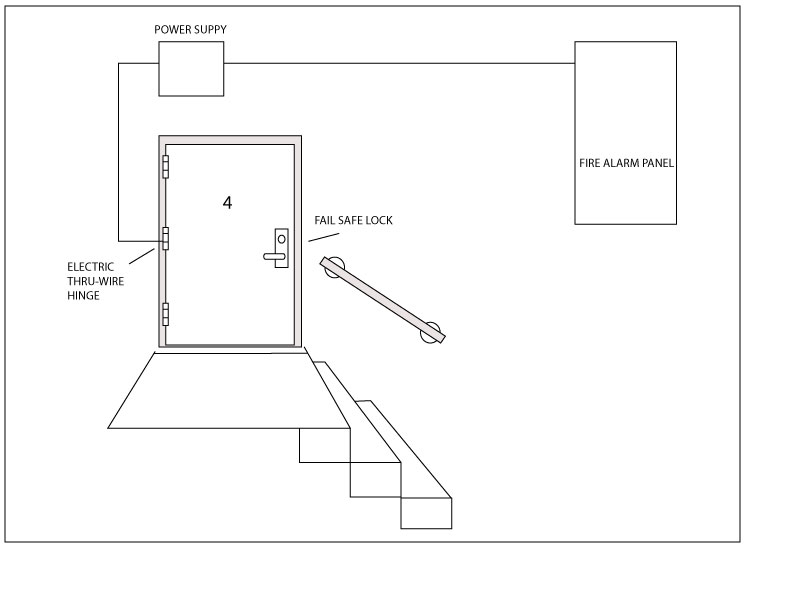Secured stairwell doors are among the most basic multi-function door applications. In most jurisdictions they must (usually)* be both unlocked and positively latched in the event of a fire. Unlocked so that if a person, fleeing into the stairwell during a fire, finds the stairwell full of smoke, they can safely exit the stairwell. Positively latched so that the door will remain latched closed against the spread of the fire.
Until there is a need for access control, a passage function mortise lock, cylindrical lock with UL listed latch or exit device with passage function trim are fine. The application begins to get interesting when the need arises to lock a stairwell door.
Right up front, electric strikes are out of the question because of the unlocked/positive latching requirement mentioned above. It is not possible to positively latch a door when the electric strike is unlocked. There is no such thing as a fire rated, fail safe electric strike. If you configure a fire rated electric strike to be fail safe it voids the fire rating.
Since electric strikes are unusable for this application, that leaves either electric locks or electromagnetic locks. Both have advantages and disadvantages. Fail safe electric locks positively latch whereas mag locks allow the installer to us the existing hardware on the door to accomplish positive latching. Electric locks require running wire through the door and some means of getting the wire from the frame into the door, such as an electric through-wire hinge. Not all inspectors like electromagnetic locks, so before you install them be sure to check with your local Authority Having Jurisdiction (AHJ ) – that is, Fire Marshal or Building Inspector.
If the stairwell door already has a fire rated exit device installed, there is probably a fail safe electrified trim available for it. Once again, this means an electric through-wire hinge or other power transfer device would be required. Sometimes existing exit devices are incompatible with the electrified trims available for that brand and model of device. If that is the case, the exit device might have to be replaced with one that is compatible with electrified trim.
Alternatively, there are after market request to exit (a.k.a. RX) switches available for most exit devices. One could be used to release an electromagnetic lock on the stairwell door.
Usually it is required that all electric locking devices on stairwell doors be controlled by the fire alarm panel. When the fire alarm is in a state of alarm, it unlocks all the stairwell doors. Two conductor wire is run from the fire alarm panel contacts to a special fire alarm relay in the power supply that powers the electric locks on the stairwell doors. The alarm panel opens the circuit, causing the state of the fire alarm relay to change, thus powering down the fail safe locks and thereby leaving them unlocked.
An important detail: technically speaking, according to most building and life safety codes, fire rated doors can only be modified in a fire rated shop. Therefore if you field cut a raceway for an electric wire through the cross members of the door, for example, you are probably voiding the fire rating. I have never heard of anyone being called on this, but it is good to keep in mind. Just like it is good to keep in mind that the AHJ has total authority over what you can or can’t install. Best make sure you’re on the same page with her or him, otherwise they do have the power to make you remove what you installed and replace both door and frame to repair the damage.
Happy hardware and good luck to you.
*Some jurisdictions specify that not all stairwell doors need be unlocked in the event of a fire, only certain doors. For example, I have known some places where code was the door had to be unlocked at every fourth floor. Check with your local AHD to find out what the rules are for your location.
access control, alarm, door hardware, electric locking, electric strike, electromagnetic lock, exit device, fail safe, life safety, path of egress, power supply, security hardware


{ Comments are closed! }